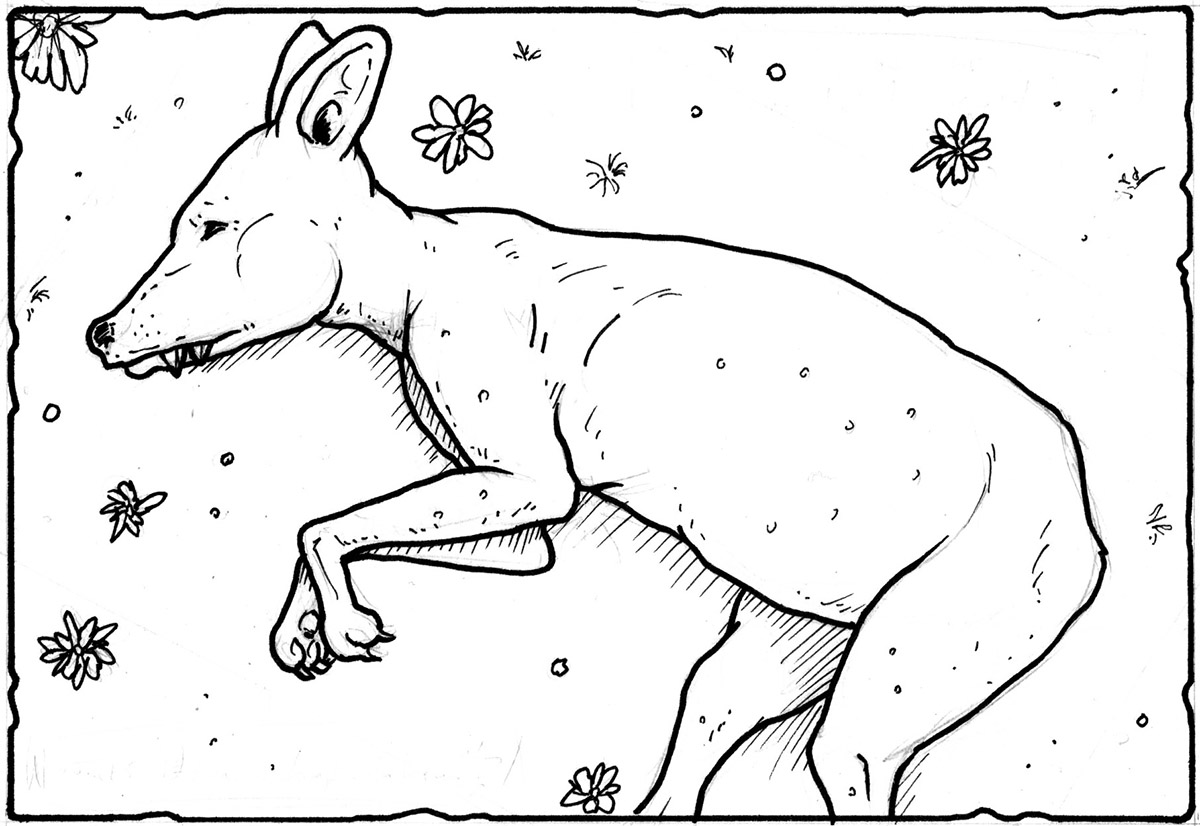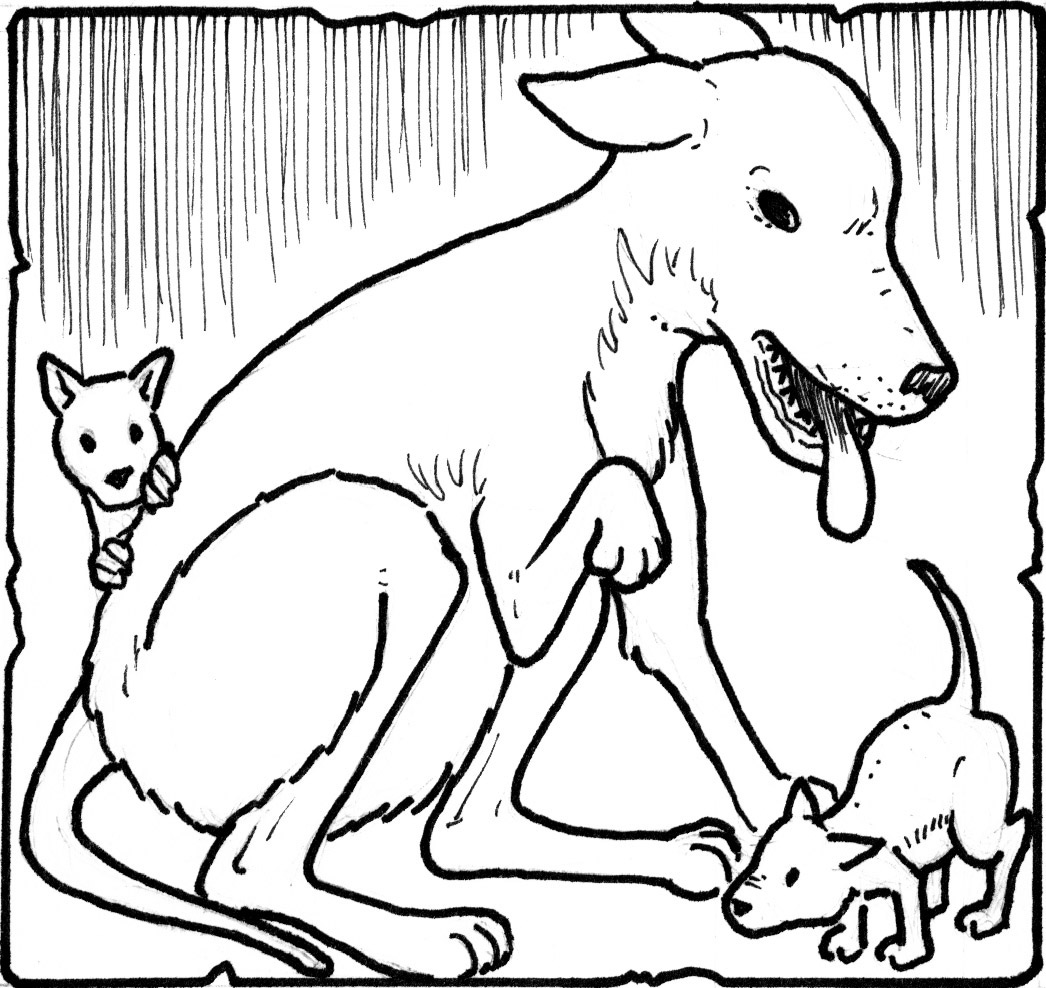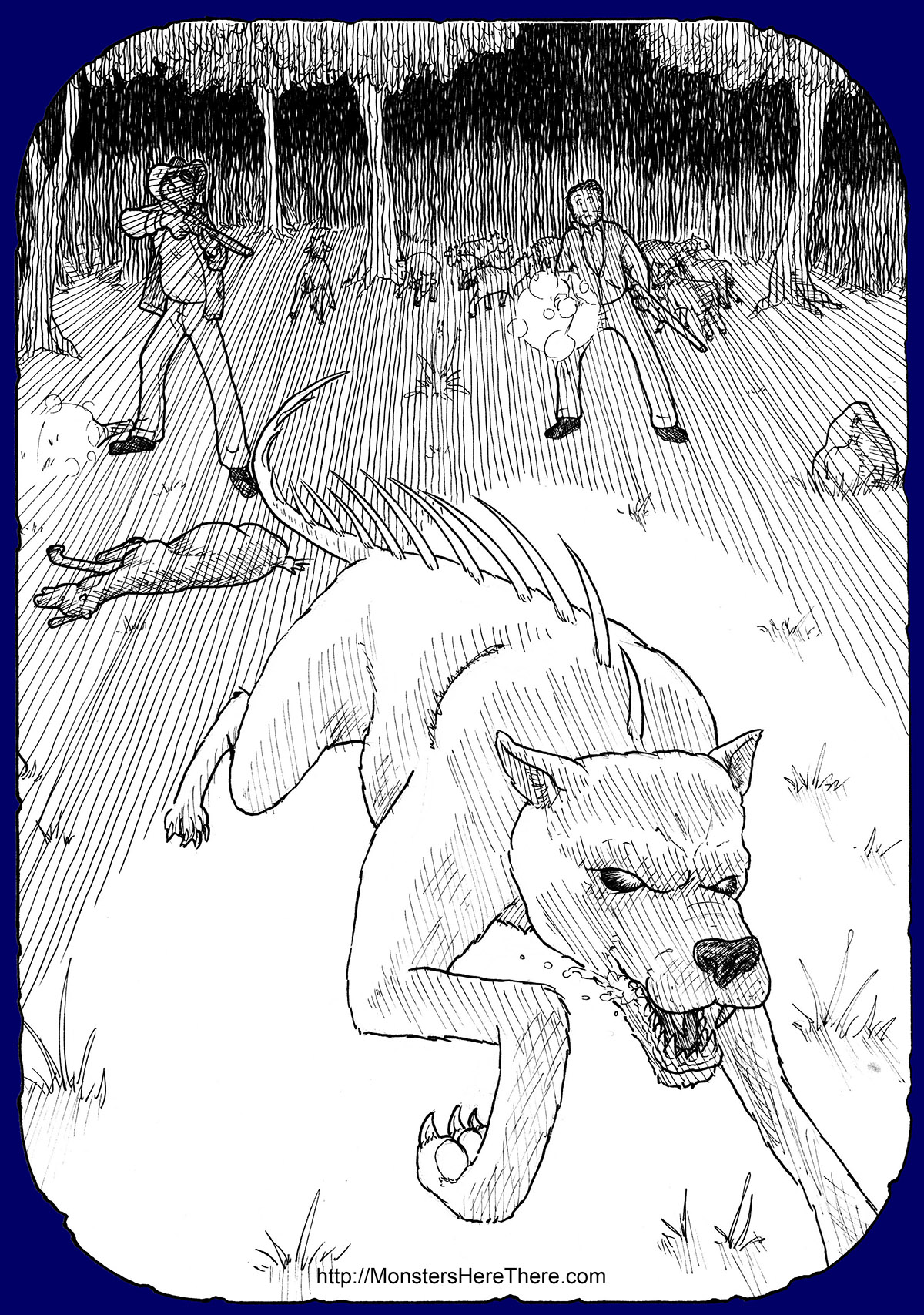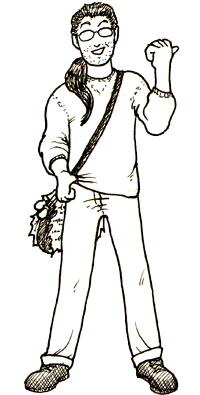Area(s) Reported: North America: United States & Mexico, South America: Nicaragua, Europe: Russia
Date(s) Reported: March 1995 to Present
In 1995, animals in Puerto Rico started to be found dead with their blood drained from them; these deaths were soon connected to sightings of an unknown bipedal animal with spines on its back. The monster was named the “Chupacabras” (literally Spanish for “Goat Sucker”), and the incidents were reported on TV worldwide. This caused two things to happen in the world outside of Puerto Rico. First, when the reports of the Puerto Rican "Chupacabras" reached the outside world, it sold newspapers, t-shirts, and games; heck, the weirdest (and worst) episode of the then-popular TV series The X-Files included a messed-up version of the Chupacabras stories. So it probably shouldn't have come as a surprise that, second, people worldwide found something else to call a 'chupacabras' when reports of the original monster started to stop. So, after the news of the Puerto Rican events were televised, reports of strange animal deaths worldwide started to be blamed on "chupacabras"... at the start, by Spanish speaking people who were first to see televised reports of the Puerto Rican weirdness, and later by newspapers worldwide that saw the name "chupacabras" as a quick way to sell papers. Most of these new reports were clearly cases of media-driven panic and mis-identification; at worst, a completely false series of “chupacabras” encounters were created by television and internet hype. Some of the new reports, however, seem to describe things that were genuinely strange. Chupacabras in South America Many of the new 'chupacabras' reports came from South America. The most intriguing story was from a San Lorenzo farm in Nicaragua on August 28, 2000. Like many other farmers in his area, Jose Luis Talavera had many sheep and goats die mysteriously, drained of blood... and because this was something the Chupacabras of Puerto Rico was reported to do, the farmers and the newspapers alike had dubbed the mystery attacker as a 'chupacabras'. Standing guard late one Friday night, Talavera spotted three creatures among his goats and shot at them. One of the creatures was hit and wounded, but all three escaped. On the following Monday morning, Talavera found a decayed body that he believed was the animal he had shot; it was in the mouth of a nearby cave. Scientists identified the body as just a dog, and generally tried to stop the newspaper hype of a 'chupacabras' having attacked Talavera's livestock. Whether or not the body found by Talavera was in fact the creature he had shot, the livestock deaths on all farms in the area ceased for two weeks after Talavera shot at the unknown creatures. Chupacabras in Texas? In July 2004, a strange animal was killed near Elmendorf, Texas, in the United States, by rancher Devin McAnally as it ate mulberries. He was convinced the animal had been stealing his chickens. 
Dubbed the “Elmendorf Beast,” pictures of the body show a hairless, dog-like animal, with oddly long teeth, claws, snout, and big hind legs. American newspapers and TV reports quickly equated this animal with the 'chupacabras' that had been reported in South America, which they stated was identified as a type of canine (a.k.a. 'dog')... which was, of course, a complete mis-representation of the Talavera incident above. The claim that 'chupacabras' were actually a type of dog was repeated by American news services when two more such bodies were found in October of the same year. Soon, there were many people who believed these bodies could represent a new, unknown species of canine living in Central America (and who also kept calling them 'chupacabras'). But the reports from the United States were different from both the original reports of the Chupacabras of Puerto Rico, and the report from South America in a critical way... the actual animals in question in the United States were never associated with draining blood from livestock, the primary evidence of a "chupacabras" attack. As more corpses of the strange animals were found and identified by news services as 'chupacabras', some were identified through DNA testing... and these few bodies were not those of some legendary monster, merely coyote/dog hybrids suffering from mange, a disease that causes hair loss and skin irritation in canines. Despite this evidence, news reports from Texas as late as July 2010 were still labeling these animal sightings as examples of “chupacabras.” Chupacabras in Russia All of the media attention led to other reports of strange animals around the world being labeled as 'chupacabras,' and it became very difficult to know what to believe and what to ignore. For example: in March 2005 reports of turkeys, goats, and sheep being found drained of blood started to come from villages in central Russia. Sightings of the beasts believed to be responsible describe something like a dog that can stand on its hind legs and jump like a kangaroo, with small front legs and large back ones. 
These strange canine animals had reportedly been seen with both red and black coats, and in the company of “a pack of pups!” Was it a real sighting? Or did the Russian news media want to have their own 'chupacabras'? We may never know!
See also: Chupacabras (of Puerto Rico) | 








